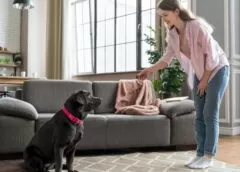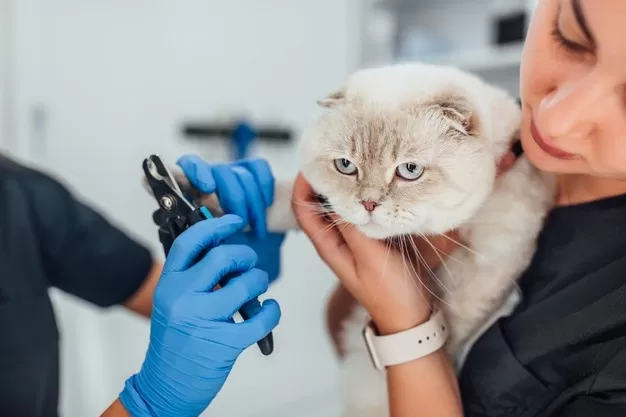You often travel, and leaving your dog is not an option. When you need to transport your dog by crate, you must train it ahead of time to save yourself the frustration. This article will go into specific methods you can do to prepare yourself and your dog.
A good plan when training your dog is to keep your sessions short. When you have multiple short training sessions instead of one long set, your dog will stay interested and anticipate more. Keeping your pet motivated by short interval sessions will be effective and have a more substantial impact.
Consistency is critical when working on crate training with a young dog. When you allow the puppy to come out of the crate, you have to immediately and without fail to give him the chance to relieve his bladder. Over time, the puppy will be able to wait until the appropriate opportunity to answer the call of nature.
You must be willing to invest the time required for practice if you want your training to succeed. It isn’t unusual to repeat a trick before the dog understands. Try using the command more often and be patient if you want your dog to learn.
Make sure only to say the command word one time while training your dog. It is essential not to repeat yourself because your pet will begin to expect you to say the instructions multiple times. You want your dog to respond to your commands as soon as you say them.
Never cave in to bad behavior. Your dog will always love you, but it needs to know that you’re the boss. Don’t encourage bad behavior, and let your dog know that any such behavior will be met with punishment. At the same time, make sure you reward good behavior as well.
The key to successful dog training is to start them as soon as possible. No matter how old your dog may be, it is never too late to get them started. While it may take a little longer, you can still achieve a great deal of success. You can start training most puppies after they are about 6 weeks old. This is the perfect time for a calmer, more obedient dog to set up the ground rules.
Decide on a specific command phrase for your pup during house training. Each time you let your dog out to relieve himself, use a phrase such as “go potty” so that he associates going outside with going to the bathroom.
If your dog suffers from separation anxiety, an easy way to train them out of it is to avoid giving them attention immediately before and after you leave. It may mean the dog if you don’t say goodbye before you leave, but that long goodbye cuddles give the dog a chance to get worked up.
Be consistent when training your dog. Your furry buddy will be easily confused when you vary your routine too much. Always give the same encouragement for a job well done. Use the exact phrases to help your dog recognize what words are for what actions. Always say ‘good dog’ and don’t vary the tone.
The best way to train a dog is by using positive reinforcement. Use a happy tone when you are rewarding your dog; pet him a lot, and give him a little treat once in a while. Don’t ever hit your dog or yell at them! It only abuses the dog and causes him to be even more disobedient. Stay positive but stand your ground when training your dog.
To prevent your dog from chewing, you should apply a smelly substance on objects you are not supposed to chew. Buy some chew toys for your dog: some dogs chew because they are going through teething, and some use chewing to release stress caused by loneliness.
Learning to listen to your dog will make you a better trainer for him. Animals are not robots that can be programmed, and your dog has a personality with preferences and quirks, just like you. Understanding the nuances of your dog’s expressions will help you decipher more in training and expand your ability to teach him.
A barking dog can drive its owner as well as the neighbors crazy! An excellent way to train your dog not to bark is to offer him a reward to stop barking! When he barks, use a command such as “Quiet!” or “No bark!” and wave his favorite treat in front of his nose. Soon he will learn that dog treats are better than making noise!
Establish where your dog’s resting and eating areas are, and don’t let him take control of your home. Prevent him from getting in the habit of sleeping in high traffic areas and confiscating sofas and comfy chairs by redirecting him to his resting area whenever you find him in the way. Don’t make a considerable production number of this. Just move him along.
An essential key to practical dog training is consistently enforcing the first command you give to your dog. It is a mistake to keep repeating the command over and over again. The dog needs to learn that command requires instant obedience. Do not allow the dog to disobey. Enforce the first command, and then promptly give a reward and praise.
Here’s a neat trick you can teach your dog. Have him sit down, and then place a chair in front of him. Encourage him to put his front paws on the chair while remaining seated. Then, take a treat and hold it between his front paws. When he lowers his head to retrieve the treat, it looks as if he is praying.
In conclusion, your dog must be introduced to crate training if you plan on doing any travel with it. This will allow for airplane transportation. If you follow the tips and tricks provided in this article, you should save yourself much headache by having a dog prepared for traveling.



